In advance of March 14, the start of free agency in the NFL, Pro Football Rumors will detail each team’s three most glaring roster issues. We’ll continue this year’s series with the Oakland Raiders, who underwhelmed with a 6-10 record after receiving significant offseason hype because of their 2016 playoff berth. The team opted to fire Jack Del Rio months after giving him an extension and bring back Jon Gruden, who has not coached since the 2008 season. After being viewed to be in better shape in 2017, the franchise is in a less cozy place as far as needs go as well entering Gruden 2.0’s first offseason.
Depth Chart (via Roster Resource)
Pending Free Agents:
- Denico Autry, DE
- NaVorro Bowman, LB
- Shilique Calhoun, LB (ERFA)
- Jon Condo, LS
- James Cowser, LB (ERFA)
- Justin Ellis, DT
- Erik Harris, S (ERFA)
- Sebastian Janikowski, K
- Denver Kirkland, G (ERFA)
- EJ Manuel, QB
- Keith McGill, S
- Reggie Nelson, S
- Lee Smith, TE
- Giorgio Tavecchio, K (ERFA)
Top 10 Cap Hits for 2018:
- Derek Carr, QB: $25,000,000
- Khalil Mack, LB: $13,846,000
- Gabe Jackson, G: $10,500,000
- Kelechi Osemele, G: $10,500,000
- Sean Smith, CB: $8,500,000
- Rodney Hudson, C: $8,350,000
- Bruce Irvin, LB: $8,250,000
- Donald Penn, T: $8,131,250
- Michael Crabtree, WR: $7,687,500
- Amari Cooper, WR: $7,210,993
Other:
- Projected cap space (via Over the Cap): $15,775,913
- Ninth/tenth pick in draft
- Must exercise or decline 2019 fifth-year option for WR Amari Cooper
Three Needs:
1) Restock the cornerback spots: The player most associated with Raiders cornerbacks over the past three years is now gone. Gruden and Reggie McKenzie showed David Amerson the door, and he’s now with the rival Chiefs. Sean Smith has not been what the franchise envisioned upon signing him in 2016, and the legal entanglement he’s gotten into paves a path for the soon-to-be 31-year-old corner out of Oakland. Releasing Smith comes free of charge thanks to McKenzie’s usual method of frontloading deals; the Raiders will see $8.5MM in cap relief with a Smith cut. The question then evolves to how to repair this area.
 With slot man T.J. Carrie a free agent, the Raiders will be incredibly thin here if/when they cut Smith. Only 2017 first-rounder Gareon Conley qualifies as a building block, and he missed all but two games of his rookie season with a troublesome shin injury. Nevertheless, Conley will be expected to commandeer one of Oakland’s starting jobs this coming season.
With slot man T.J. Carrie a free agent, the Raiders will be incredibly thin here if/when they cut Smith. Only 2017 first-rounder Gareon Conley qualifies as a building block, and he missed all but two games of his rookie season with a troublesome shin injury. Nevertheless, Conley will be expected to commandeer one of Oakland’s starting jobs this coming season.
Despite being a UFA, Carrie — a Bay Area native — already met with Gruden and members of the new coaching staff. He’s expressed a desire to stay. Although Carrie had his best season in 2017 after winning the slot job full-time following D.J. Hayden‘s exit, the 27-year-old defender will be in a market with other (more proven) slot stoppers Patrick Robinson, Aaron Colvin and Nickell Robey-Coleman. A midlevel deal might be enough to keep Carrie in Oakland, thus locking down another of the team’s de facto starting spots.
With the Raiders no longer having a high-end cornerback salary on their books, in the event they cut Smith, they could target one of the upper-echelon free agents. And Tony Pauline of DraftAnalyst.com reports they don’t intend to go exclusively after bargain buys, with Trumaine Johnson being their top UFA target.
With needs across their defense, steering clear of the Johnson/Malcolm Butler/Kyle Fuller tier may be the wiser choice. The team visited with Vontae Davis, but he opted for a Bills agreement. Other members of this upper-middle class of veterans include Prince Amukamara, Bashaud Breeland, Rashaan Melvin and E.J. Gaines.
The Raiders’ budget will be tighter because they will not be making rumored cuts. Both Bruce Irvin ($8.25MM in potential savings, no dead money) and Michael Crabtree ($7.27MM would-be savings, no dead money) will not be released. Each’s upper-middle-class salary will remain on the Raiders’ books. While these cuts would have created key needs as well, the veteran duo remaining on the roster will limit the team to some degree. And a long-rumored Khalil Mack extension coming to fruition could shrink the the signing bonus-averse franchise’s spending allotment further.
That said, Johnson offers reliability the Raiders haven’t had in years. Amerson had a strong 2015 season en route to his extension but was inconsistent a year later and experienced extensive injury trouble last season. Smith did not play as well as he did in Kansas City and has off-field troubles to attend to.
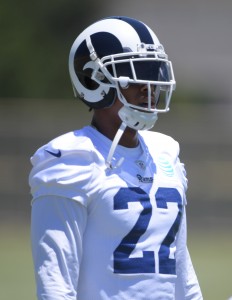 Johnson turned 28 in January and has been a solid corner for years, enough so that the Rams felt the need to tag him twice. And Los Angeles’ trade for Marcus Peters ensures Johnson will hit the market. And he will not come cheap.
Johnson turned 28 in January and has been a solid corner for years, enough so that the Rams felt the need to tag him twice. And Los Angeles’ trade for Marcus Peters ensures Johnson will hit the market. And he will not come cheap.
Former teammate Janoris Jenkins signed for $12.5MM per year in 2016 — a $155MM cap universe — so it would be hard to see Johnson signing for less when the cap will approach or exceed $180MM. And if McKenzie would continue his usual contract policy to ensure protection in deals’ later years, a Johnson pact would eat into Oakland’s funds considerably. And the 6-foot-2 corner with a history of press-man ability will have an extensive market.
The more prudent method would be spreading money around their defense, which indeed needs help at all levels after the Raiders inexplicably ignored their biggest needs in free agency last year. They opted to spend money to augment a top-10 offense, which interestingly became much worse, and the defensive problems remained.
Despite the resources poured into their cornerback position in recent years, the Raiders have not posed much trouble to opposing quarterbacks. The two Amerson/Smith years produced pass-defense rankings of 24th and 26th, and the Raiders also finished 26th in air deterrence in 2015.
The Raiders picked two cornerbacks in the first round this decade in Hayden and Conley but did not supplement them with other high picks. The team could turn back to the draft again, now that finances are tighter than they have been in many years.
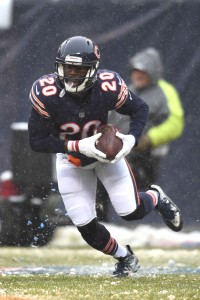 Amukamara has failed to fetch a multiyear deal the past two offseasons, but the former first-round pick continues to produce — grading well in seasons with the Jaguars and Bears the past two years. Amukamara will be set for his age-29 season in 2018, and after participating in 14 games in each of the past two years, he has to some degree shaken the injury questions that dogged him in years past. With a few productive seasons likely left, Amukamara would make a good stopgap player.
Amukamara has failed to fetch a multiyear deal the past two offseasons, but the former first-round pick continues to produce — grading well in seasons with the Jaguars and Bears the past two years. Amukamara will be set for his age-29 season in 2018, and after participating in 14 games in each of the past two years, he has to some degree shaken the injury questions that dogged him in years past. With a few productive seasons likely left, Amukamara would make a good stopgap player.
Gaines is younger (26), and after a strong 2017 showing, looks to command more money than Amukamara. But he has not been consistent. The University of Missouri product broke out despite being shipped to the Bills in August of last year. He deflected a career-high 11 passes — although, he was targeted 132 times — and rated as Pro Football Focus’ No. 13 corner. He’ll have a big market.
Melvin was a bright spot on a poor Colts defense. While a hand injury halted his season at 10 games, he intercepted the first three passes of his career and thrived as a man defender. PFF’s No. 17 corner last season, Melvin has little to go on as far as sample size as a former nomad-turned-starter but likely made a market for himself with a nice 2017. The Colts intend to let him reach free agency.
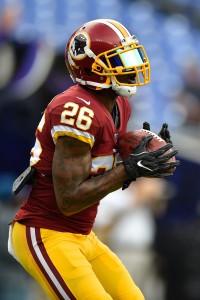 The Redskins dealt Kendall Fuller to the Chiefs but already have a corner making more than any other. They are likely to still let Breeland test the market. Breeland played well in both 2015 and ’17, coming on down the stretch of his contract year. Ideally, Conley would grow into being Oakand’s No. 1 corner with a Breeland- or Amukamara-type player being the complementary piece. But that might not happen in 2018. Intra-Gruden communication may ensue about Breeland, considering he played for Jay Gruden‘s team for four years. The Raiders had success plucking Amerson from Washington’s scheme. And given Jon Gruden’s involvement, they may well inquire about Breeland.
The Redskins dealt Kendall Fuller to the Chiefs but already have a corner making more than any other. They are likely to still let Breeland test the market. Breeland played well in both 2015 and ’17, coming on down the stretch of his contract year. Ideally, Conley would grow into being Oakand’s No. 1 corner with a Breeland- or Amukamara-type player being the complementary piece. But that might not happen in 2018. Intra-Gruden communication may ensue about Breeland, considering he played for Jay Gruden‘s team for four years. The Raiders had success plucking Amerson from Washington’s scheme. And given Jon Gruden’s involvement, they may well inquire about Breeland.
This franchise has not gone back-to-back in the first round at a position since taking corners Phillip Buchanon and Nnamdi Asomugha in the 2002 and ’03 first rounds, and the Raiders had two first-round picks in each of those years. But given that little has worked to establish consistency at this position, and a new regime having taken the reins, going corner in Round 1 is in play.
 It’s difficult to assess a position before the Combine, but the players viewed as the two top CBs entering the Combine may still be on the board in the Raiders’ range. Denzel Ward played with Conley at Ohio State and has been projected as a top-10 pick. Iowa’s Josh Jackson, last season’s Division I-FBS interception leader with eight, would profile as a candidate to generate debate from the Raiders. Ward’s size (5-foot-10) may have made him a poor fit for Ken Norton Jr.‘s defenses, but that wasn’t as big of a hangup for new DC Paul Guenther in Cincinnati.
It’s difficult to assess a position before the Combine, but the players viewed as the two top CBs entering the Combine may still be on the board in the Raiders’ range. Denzel Ward played with Conley at Ohio State and has been projected as a top-10 pick. Iowa’s Josh Jackson, last season’s Division I-FBS interception leader with eight, would profile as a candidate to generate debate from the Raiders. Ward’s size (5-foot-10) may have made him a poor fit for Ken Norton Jr.‘s defenses, but that wasn’t as big of a hangup for new DC Paul Guenther in Cincinnati.
Oakland has been linked frequently to Georgia inside linebacker Roquan Smith at Nos. 9 or 10. That makes sense due to the struggles this franchise has experienced at non-rush ‘backer over the past few years aside from UFA NaVorro Bowman‘s work. But cornerback should be a Round 1 consideration despite Conley’s arrival last April.
Four quarterbacks could possibly go in the top eight. That would give the Raiders access to some high-end talent that wouldn’t otherwise be available to them. That could make this a best-player-available situation, but those two Big Ten corners could qualify as such.
2) Seek second-level assistance: Since leaving Green Bay to become Oakland’s GM, McKenzie has followed in his mentor’s footsteps when it comes to drafting off-ball linebackers. Like Ted Thompson for most of his Packers tenure, the McKenzie-era Raiders have rarely used quality draft resources to address their non-rush ‘backer spots. That might change soon.
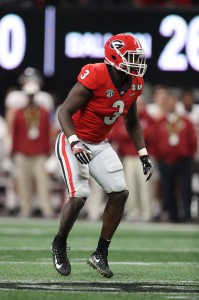 Smith-to-Oakland is one of the most sensible fits in the first round, if he is to remain on the board by the time the Raiders go on the clock.
Smith-to-Oakland is one of the most sensible fits in the first round, if he is to remain on the board by the time the Raiders go on the clock.
Although McKenzie’s highest linebacker pick with the Raiders was Sio Moore, whom he traded in 2015, Smith could be a Day 1 starter on a team with more talent than the one Moore (Round 3, 2013) started for.
The Georgia tackling machine could start at outside linebacker in Week 1. Smith’s strength is not sifting through blockers, making him a lesser fit in the middle of a 4-3 setup despite his athleticism. A spot on the outside and a role in the team’s nickel set would be a mutually beneficial setup. The Raiders are in dire need of a linebacker with plus coverage range, and the 225-pound Butkus Award winner would fit that requirement.
Smith did everything for the Bulldogs last season, going off for 137 tackles (14 for loss) and 6.5 sacks. A Smith arrival would have the Silver and Black partially covered in nickel sets when Irvin shifts down to a defensive end position. But the team would still have a vacancy in the middle.
Oakland observed Bowman show he still had quality football left after the parties’ midseason agreement, and the former 49ers superstar would like to stay with the Raiders. Guenther would like him back as well. The four-time first-team All-Pro shook off another severe injury, bouncing back to start 15 games. While he’s not what he was before the gruesome broken-leg sequence ended his 2014 season before it started, Bowman will only be 29 next season. As the likes of Derrick Johnson, Paul Posluszny and Wesley Woodyard have shown in recent years, non-rush ‘backers can still have big impacts north of 30. Bowman would make sense on a second Raiders contract.
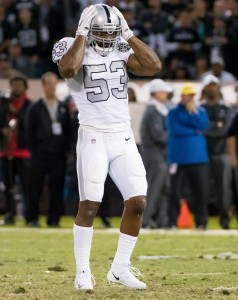 If the Raiders and Bowman cannot come to terms, Kevin Minter worked under Guenther and new LBs coach David Lippincott last season in Cincinnati. The 27-year-old middle linebacker, though, didn’t play especially well in his latest contract year. Fifth-year players Avery Williamson, Todd Davis, Anthony Hitchens and Preston Brown are also on the verge of hitting the market. So, the Raiders will have options if Bowman ventures out of the Bay Area for the first time as an NFLer.
If the Raiders and Bowman cannot come to terms, Kevin Minter worked under Guenther and new LBs coach David Lippincott last season in Cincinnati. The 27-year-old middle linebacker, though, didn’t play especially well in his latest contract year. Fifth-year players Avery Williamson, Todd Davis, Anthony Hitchens and Preston Brown are also on the verge of hitting the market. So, the Raiders will have options if Bowman ventures out of the Bay Area for the first time as an NFLer.
The Raiders’ recent dives into the market have not been especially beneficial, making the October Bowman accord stand out.
Curtis Lofton didn’t last into a second season, and Jelani Jenkins didn’t make it past training camp. Malcolm Smith received a big 49ers payday but struggled often in Oakland, particularly in coverage. And Bowman filled a dire need after Marquel Lee — the latest McKenzie attempt at a Day 3 investment at this position — proved not to be ready early.
3) Figure out a plan at WR: Crabtree’s status has been disputed this offseason. Jason La Canfora of CBS Sports reported the ninth-year vet was not in the Raiders’ plans, but it appears Gruden will be giving Crabtree another chance despite his play dramatically falling off last year. But that wasn’t exactly an outlier on one of the most disappointing NFL teams in recent memory.
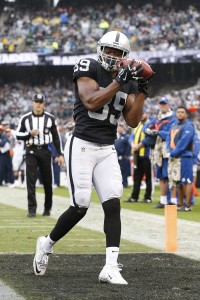 Crabtree will be 31 in September, and neither he nor Amari Cooper was the Raiders’ leading receiver in 2017. That was Jared Cook with 655 yards. That’s a bit of a problem considering Cooper and Crabtree were both 1,000-yard receivers in 2016. Cook will also be 31 in 2018. The Raiders have nothing around Cooper for the long haul. They will surely need to address that this offseason. The situation becomes more desperate the longer the team waits.
Crabtree will be 31 in September, and neither he nor Amari Cooper was the Raiders’ leading receiver in 2017. That was Jared Cook with 655 yards. That’s a bit of a problem considering Cooper and Crabtree were both 1,000-yard receivers in 2016. Cook will also be 31 in 2018. The Raiders have nothing around Cooper for the long haul. They will surely need to address that this offseason. The situation becomes more desperate the longer the team waits.
Oakland will be picking up Cooper’s fifth-year option. His down year aside, the former top-five pick is still in his early 20s and has two 1,000-yard seasons to his credit. Cooper has some work to do, but he’ll remain a key part of Oakland’s aerial attack in 2018.
A Cooper extension likely isn’t as imminent as it once was, but that’s still on the radar for 2019. McKenzie and Co. will have to proceed accordingly. The Raiders, though, should be ready to move on from perennial PFF shade target Seth Roberts — whom the advanced metrics site again graded as one of the NFL’s worst full-time WRs — or at least demote him after two full seasons in the WR3 role. Crabtree’s salary remaining on the payroll — and the defensive needs this team possesses — may make diving into the wideout market dicey. The draft would make more sense.
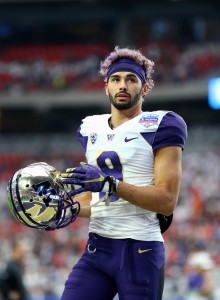 Being perpetually thin on defense, it would be hard for the Raiders to justify drafting a wideout with their high-Round 1 pick. But the 2018 prospect crop doesn’t feature an abundance of surefire first-round talent anyway. And if the Raiders wish to upgrade from Roberts via draft choice, they have slot options.
Being perpetually thin on defense, it would be hard for the Raiders to justify drafting a wideout with their high-Round 1 pick. But the 2018 prospect crop doesn’t feature an abundance of surefire first-round talent anyway. And if the Raiders wish to upgrade from Roberts via draft choice, they have slot options.
Dante Pettis (Washington), D.J. Moore (Maryland) and Memphis’ Anthony Miller profile as second-night selections. As one of the most accomplished punt returners in college football history, Pettis (nine punt-return TDs in four seasons in Seattle) was also a solid receiver. His 15 touchdown grabs as a junior during the Huskies’ College Football Playoff journey helped considerably. It’s hard to imagine he wouldn’t be an asset early — if nothing else, as a lethal return man. Oakland signed Cordarrelle Patterson, an All-Pro specialist who only returns kicks, last year to illustrate the newfound value the franchise placed in special teams impact.
Miller carved up American Athletic Conference competition, recording almost 3,000 air yards and 32 touchdowns over his final two years — which, statistically, were almost identical. Moore is a bit shorter (listed at 5-11) and didn’t have the eye-popping numbers, but he played in the Big Ten. He’s landed as a Day 2 target, catching NFL.com draft guru Mike Mayock’s eye.
The WR position is murky after Calvin Ridley. Plenty of variance exists. Pauline’s pre-Combine mock has high-caliber slot man Christian Kirk (Texas A&M) falling to the middle of the second round. The Raiders would be keen to strongly consider him if he made it to their second draft window.
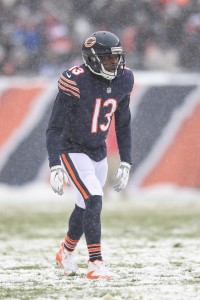 Recent Day 2 wideouts like Michael Thomas, Jarvis Landry and Allen Robinson have shown early productivity can come from the second and third rounds. And the presences of Cooper, Crabtree and possibly Cook can help ease one of these targets into an NFL role. However, as Cody Latimer, Dorial Green-Beckham and Sammie Coates have also shown, the second- or third-round wide receiver landscape can be a minefield.
Recent Day 2 wideouts like Michael Thomas, Jarvis Landry and Allen Robinson have shown early productivity can come from the second and third rounds. And the presences of Cooper, Crabtree and possibly Cook can help ease one of these targets into an NFL role. However, as Cody Latimer, Dorial Green-Beckham and Sammie Coates have also shown, the second- or third-round wide receiver landscape can be a minefield.
If the Raiders want to target a veteran slot, Kendall Wright is again available. And despite playing in an anemic Bears attack, Wright (59 receptions, 614 yards) displayed he still has viability after two years of being effectively buried in Tennessee. His 80.4 percent catch rate was second among free agent slot performers. A higher-upside pick would be Albert Wilson, who at 26 (in July) is three years younger and displayed elite elusiveness last season. While Wilson was not an especially interesting Chiefs supporting-caster in the past, he ranked in the top five of forced tackles missed last season and became a key target in Andy Reid‘s unique offense. However, word may be out on Wilson to the point he’s not a buy-low player anymore. An Eric Decker flier wouldn’t make much sense either given his age.
Regardless of how he arrives, at least one promising complementary wideout figures to be added to the Cooper- and Crabtree-fronted crew this spring.
dont they need a bailbondsman?
That would be Dallas